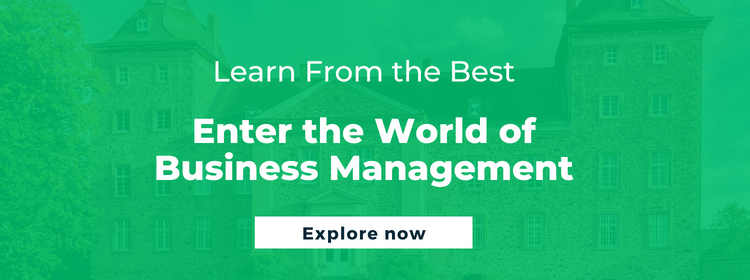What Makes Business Process Reengineering a Successful Strategic Tool?

In today’s fast-paced business environment, Business Process Reengineering (BPR) has become an increasingly important technique for companies looking to stay ahead of the curve. This guide explores the principles of BPR, its advantages and disadvantages, and the steps involved in implementing it. We will also provide a real-life example and discuss the signs that indicate a company may be ready for BPR to help you understand what is business process reengineering. To start with, how does it work?
How Does Business Process Reengineering Work?
What is business process reengineering? Simply put, it is a management technique that aims to optimize and streamline an organization’s processes to boost efficiency, save costs, and promote customer satisfaction. BPR entails a radical redesign of business processes and it usually comprises the following phases:
- Analysis: Determine areas for improvement by identifying and analyzing current business processes
- Rebuild: Rethink and redesign processes from the ground up to achieve optimum efficiency and effectiveness
- Implementation: Put the new procedures into operation, as well as make any necessary technological and organizational adjustments
- Monitoring and refining: Keep an eye on the new processes’ performance and make modifications as needed to guarantee continual improvement
ALSO READ: What is Change Management? What are its Best Practices?
Principles of Business Process Reengineering
To get a better grasp on what is business process reengineering, let’s take a closer look at its principles:
Customer-Focused
It constantly prioritizes the customer’s experience and satisfaction with the company.
Process-Oriented
It improves and simplifies business processes to achieve major gains in efficiency, cost, quality, and speed.
Data-Driven
It focuses on data and analytics to identify areas for improvement and make educated process redesign decisions.
Cross-Functional
It requires collaboration and coordination across departments and functions to produce smooth and integrated operations.
Radical Redesign
It entails a radical rethinking of current processes, rather than incremental adjustments, to produce large performance improvements.
Technologically Enabled
It typically embraces technology and utilizes digital tools and platforms to optimize procedures and boost performance.
Continuous Improvement
It is a continuous improvement approach that necessitates continual monitoring and refining.
Employee-Centered
Establishing more efficient and effective procedures, involves employees in the redesign process and solicits their opinion and feedback.
Agile and Adaptive
It necessitates a flexible and adaptable methodology capable of responding swiftly to changing business needs and market conditions.
Holistic View
It provides a holistic and integrated approach to process improvement, taking into account the organization as a whole as well as the interrelationships between distinct processes.
ALSO READ: What is Business Management? How to be a Good Business Manager
Business Process Reengineering: Advantages and Disadvantages
Now that we have a fair idea of what is business process reengineering, let’s take a closer look at its advantages and disadvantages.
The advantages of business process reengineering are:
- Increased Efficiency: It can greatly increase the efficiency of corporate processes by decreasing waste and inefficiencies
- Reduced Costs: By optimizing processes, BPR can reduce costs, improving profitability and competitiveness
- Improved Customer Satisfaction: It should always prioritize the customer and work to improve their interaction with the organization
- Enhanced Quality: BPR can increase the quality of products and services, resulting in higher customer satisfaction and loyalty
- Increased Speed: It assists firms in completing procedures more rapidly, boosting response times and competitiveness
- Better Use of Technology: BPR aids firms in better leveraging technology and digital tools to optimize processes and boost performance
- Employee Involvement: Involving employees in the BPR process can lead to increased engagement and motivation
The major disadvantages of business process reengineering are:
- Significant Investment: BPR can be a time- and resource-intensive process that necessitates significant organizational investment
- Change Resistance: Because BPR entails major change and disruption, employees can resist these changes, resulting in a deadlock
- Implementation Difficulties: Implementing new procedures can be tough, necessitating major change management efforts as well as technical skills
- Potential Job Loss: It can result in job losses, especially if operations are automated or outsourced, raising concerns among employees
- Culture Shift: BPR necessitates a cultural shift away from incremental improvements and toward radical process transformation
- Risk of Failure: It entails taking risks, and there is a chance of failure if the redesign does not produce the expected results
Business Process Reengineering Steps
1. Defining the Need for Change
Companies have to identify the need for BPR, including the specific challenges or issues the organization faces and the goals it wants to achieve through BPR.
2. Forming a Case Management Team
The next step involves assembling a team of individuals with the skills and expertise to lead the BPR effort, including process experts, technology experts, and change management specialists.
3. Choosing the Process to Re-Engineer
The team has to select the processes that will be the focus of the BPR effort based on factors such as cost, quality, speed, and customer satisfaction.
4. Mapping the Process and Setting Objectives
Thereafter, they have to create a detailed map of the current process and set specific improvement objectives. This step requires a thorough analysis of the inputs, outputs, and metrics associated with the process.
5. Reengineering Management
Redesigning the process is needed to improve efficiency, reduce costs, and enhance customer satisfaction. This involves a radical rethink of the process rather than incremental improvements.
7. Continuous Feedback and Audit
The last step entails continuously monitoring the performance of the reengineered process and making necessary adjustments to improve performance. This step requires regular feedback and communication from employees, customers, and other stakeholders, as well as a comprehensive change management plan to ensure the transition is smooth and effective.
Business Process Reengineering Example
To give you a clear idea of what is business process reengineering and how it affects an organization, let’s look at the transformation of Dell Inc’s supply chain management process in the 1990s. At the time, Dell faced challenges with its traditional model of building computers to order, including long lead times and high costs. To address these challenges, Dell implemented BPR by completely rethinking its supply chain management process. Instead of building computers to order, Dell started assembling computers only after receiving a customer order, thereby reducing lead times and inventory costs.
Additionally, Dell established partnerships with suppliers to improve the flow of components and information, reducing costs and improving efficiency. As a result of these efforts, Dell gained a significant competitive advantage in the market. This transformation of Dell’s supply chain management process is widely recognized as a classic example of BPR, and its success has inspired many other organizations to adopt similar approaches.
How to Determine if Your Company is Ready for BPR
Here are four signs that indicate your company may need to start business process reengineering:
Inefficient Processes
If your business processes are overly complex, slow, or prone to errors, it may be time to consider BPR to streamline and optimize them.
Lack of Agility
If your company cannot quickly respond to market or customer needs changes, BPR can help you create more agile and adaptive processes.
Decreased Competitiveness
If your company is losing ground to competitors, BPR lets you identify areas for improvement and create a more competitive business.
Decreased Productivity
If your company is facing declining productivity and rising costs, you can use BPR to identify the root causes and find ways to improve efficiency and reduce costs.
To conclude, business process reengineering is a powerful tool for companies looking to transform their business processes and improve their competitiveness. We hope this guide has answered your questions and given you a clear understanding of what is business process reengineering. To learn more about business management processes, you can explore the various online business management courses on Emeritus, created in association with the best universities worldwide.
Write to us at content@emeritus.org





